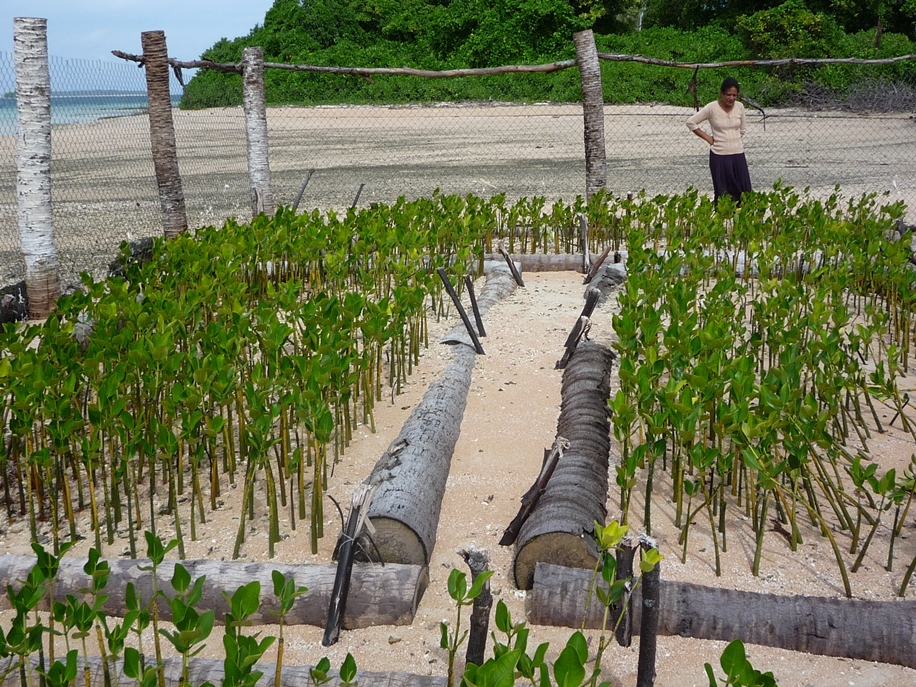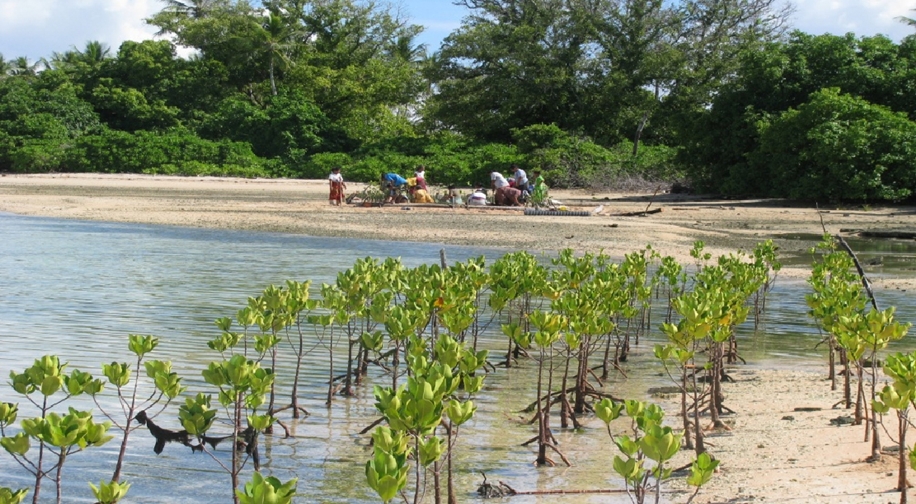This remote, small island nation is located in the South Pacific between the countries of Kiribati and Fiji. Its nine atolls have a total land area of under 10 square miles, with the highest elevation only 16 feet above sea level. A major threat to Tuvalu is the degradation of both land and marine resources. Sea level rise caused by climate change is a major contributor to this degradation and loss of biodiversity and natural resources.
Mangroves are an important resource here. They enhance local fisheries, provide material for handicrafts and firewood, and protect the people from tidal and storm surge. The Tuvalu National Council of Women (TNCW) has long recognized the importance of mangroves and the need to better protect the lagoons and coasts of Tuvalu’s small atoll islands.
TNCW, with the Tuvalu Association of Non-Government Organizations, has proposed replanting mangroves and Beauty Leaf Laurel seedlings in outer islands that are threatened by coastal erosion. The project will also engage women and youth in planting a two-acre lagoon-based mangrove nursery and reserve. A one-kilometer stretch of coastline will be planted to protect the main village area on Nanumea.
Community members will use a Seacology grant to refurbish their handicraft center by adding two rooms for training, meetings, and handicraft production.



